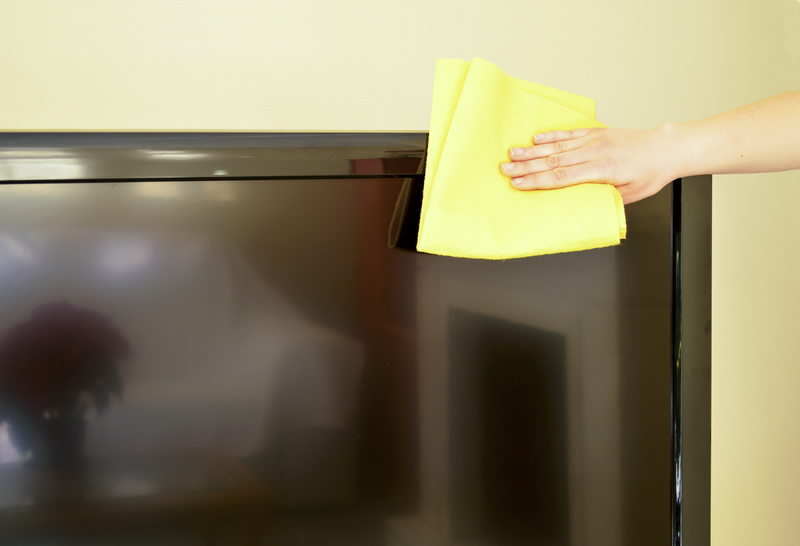Grease-Busting Tips: The Ultimate Guide to Cleaning Enamel Oven Trays
Is your enamel oven tray sticky with stubborn, baked-on grease? Struggling with burnt food build-up and want to restore your trays to their shiny, pristine state? If so, you're in the right place! In this comprehensive guide, we'll unveil expert grease-busting tips, easy home remedies, and professional cleaning techniques to make cleaning enamel oven trays hassle-free and effective.
Why Clean Enamel Oven Trays Regularly?
Oven trays form the backbone of every home baker and cook's kitchen, but they also tend to become magnets for grease and grime. Regular maintenance and cleaning are crucial because:
- Healthier cooking: Remove burnt-on food and bacteria, ensuring your next meal is fresh and safe.
- Enhanced performance: Food cooks more evenly on clean, non-greasy surfaces.
- Longevity: Clean trays last longer, saving you money in the long run.
- Aesthetics: Sparkling oven trays simply look better!

Understanding Your Enamel Oven Tray
Before you start scrubbing, it's vital to recognize what makes enamel oven trays different from their stainless steel or aluminum counterparts:
- Durable enamel coating that resists rust and corrosion.
- Non-stick surface--helps with easy release of cooked foods.
- Susceptible to scratches--avoid using harsh abrasives or metal tools.
Knowing your tray's strengths and vulnerabilities helps avoid damage during the cleaning process, ensuring lasting performance.
Supplies You Need for Cleaning Enamel Oven Trays
Having the right tools on hand ensures you get the best clean without unnecessary elbow grease:
- Soft sponges or non-abrasive scrubbers
- Plastic or wooden spatulas for scraping (never metal)
- Baking soda
- White vinegar
- Liquid dish soap
- Hot water
- Old toothbrush for corners and crevices
- Commercial oven tray cleaner (for stubborn stains)
- Gloves (to protect your hands)
Step-by-Step: How to Clean Enamel Oven Trays
1. Initial Preparation
- Let the enamel oven tray cool completely after use.
- Carefully remove any loose or large food particles using a wooden or plastic spatula.
- Rinse off loose debris with hot water in the sink.
2. Soaking: The Secret to Loosening Grease
- Fill your sink or a large container with hot water and a few squirts of liquid dish soap.
- Submerge your tray and let it soak for 30-60 minutes.
- Tip: For extremely tough grease, add a half cup of baking soda to the solution.
3. Baking Soda and Vinegar Paste
- Make a thick paste by mixing baking soda with a small amount of water.
- Apply the paste evenly to greasy, burnt-on areas of the enamel oven tray.
- Spritz white vinegar over the baking soda paste--observe the fizzing action as it lifts grime.
- Let this chemical reaction work for at least 15-20 minutes.
- Scrub gently with a soft sponge or old toothbrush.
4. Rinsing and Inspecting
- Rinse the tray thoroughly with hot water to remove all paste and loosened grime.
- Inspect carefully. For lingering stains, repeat the paste process or move on to commercial solutions.
5. Attack Stubborn Stains: Commercial Grease Cleaners
- Select a specialist oven tray cleaner formulated for enamel surfaces.
- Follow the manufacturer's instructions for application and dwell time.
- Never use metal scrubbers, scouring pads, or harsh chemical cleaners not designed for enamel, as these can damage the coating.
Alternative Methods for Cleaning Greasy Enamel Oven Trays
Using Lemon and Salt for Natural Grease Removal
- Halve a lemon and sprinkle coarse salt over the greasy areas.
- Use the lemon as a scrubber--its acidity helps cut through the grime.
- Let the mixture sit for 10 minutes before rinsing off thoroughly.
Dishwasher Option: Is It Safe?
*Most enamel oven trays are dishwasher safe, but always check with your manufacturer first. Place trays flat, away from other items that could chip the enamel. Dishwasher cleaning is great for light grease but may not remove heavy, baked-on residue as thoroughly as manual cleaning methods.*
Grease Prevention: Keeping Enamel Oven Trays Clean Longer
- Line trays with parchment paper or foil before roasting fatty foods.
- Wipe down trays with a damp cloth immediately after every use--this prevents grease from hardening.
- Regular light cleaning usually means you never have to deal with daunting, baked-on messes.
- Store trays in a dry, cool place to prevent moisture build-up.
Frequently Asked Questions About Cleaning Enamel Oven Trays
Can I use oven cleaner sprays on enamel trays?
Oven cleaner sprays can be effective but may be too harsh for some enamel coatings. Always read the label--look for products specifically formulated for enamel cookware or oven trays.
Are baking soda and vinegar safe for enamel oven trays?
Yes! The combination of baking soda and vinegar is gentle yet effective for cutting through grease without scratching enamel surfaces.
What if my enamel tray has scratches or chips?
If you notice chipping or deep scratches, avoid using acidic or abrasive cleaners as these may worsen the damage. For badly damaged trays, it may be safest to replace or reserve them for non-food use.
How often should I clean my enamel oven trays?
After every use is ideal for best results, but at least once a week if you cook often. The more frequently you wipe them down, the less scrubbing you'll need later!
Commercial Cleaners vs. DIY Remedies: Which is Best?
- DIY Solutions--like baking soda and vinegar--are non-toxic, budget-friendly, and safe for regular cleaning. They are ideal for most day-to-day greasy build-up.
- Commercial Cleaners--these offer intensive grease-busting power, perfect for those once-in-a-while deep cleans. Use them sparingly to maintain the enamel's integrity.
Pro Tip: Always spot-test any cleaner or homemade paste on a small tray area first to check for adverse reactions or discoloration.
Common Mistakes to Avoid When Cleaning Enamel Oven Trays
- Don't use metal scouring pads or wire brushes--they'll scratch and dull the enamel surface.
- Never soak in bleach or ammonia--these chemicals cause long-term damage to the coating.
- Don't stack trays while still wet--trapped moisture can undermine the enamel finish and promote rust on the exposed metal edge.
- Avoid sudden temperature changes--never put a hot tray into cold water; thermal shock can crack the enamel.

When to Replace Your Enamel Oven Tray
A well-cared-for enamel oven tray can last for many years, but it's important to recognize signs it's time for a replacement:
- Large chips or missing enamel exposing metal underneath
- Persistent greasy residue that cannot be removed even after several cleaning attempts
- Rust formation along tray edges or corners
- Noticeable warping or bending
If you notice these issues, it's safer for your cooking and health to invest in a new enamel oven tray.
Conclusion: Enjoy Sparkling Clean Enamel Oven Trays
With the right techniques, cleaning enamel oven trays doesn't have to be a dreaded chore. By following these grease-busting tips and prevention strategies, you'll keep your oven trays spotless, resilient, and ready for delicious meals every time.
Remember: A quick wipe after use, monthly deep cleans, and gentle tools are the secret to maintaining your enamel baking trays in top condition. Happy cleaning!